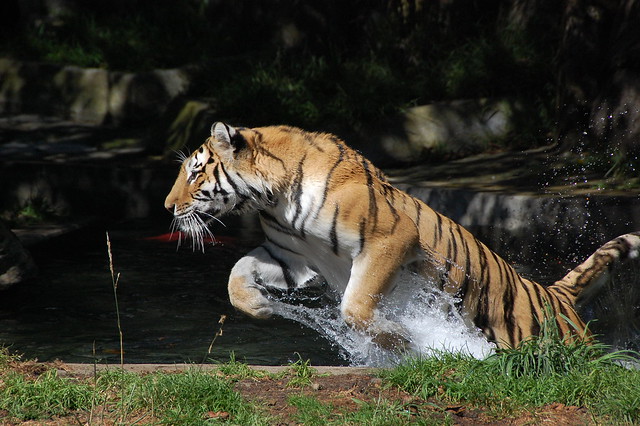
Tiger and wild cat trade from Myanmar to China is
growing at an unprecedented level according to a new report. Shops
selling products from big cats are said to have trebled their trade in
eight years.
The new study, about the threats faced by 'big
cats', is based on two decades of research. The results give cause for
alarm for anybody who is concerned about big cat conservation. The big
cat in greatest demand is the tiger, which accounts for some 80 percent
of the products available at the main trade sites. The new studies
recorded a total of over two thousand wild cat parts being freely sold.
The epicenter of trade is Mong La, a Myanmar (formerly Burma) town
bordering China. The next most popular animal parts come from clouded
leopards. While such trade is illegal in Burma, according to the BBC, Burmese authorities have no control over the town, which is run by an armed group following a peace deal with the government.
Earlier this year, the Chinese government publicly admitted for the first time that it allowed trade in tiger skins, although buying and selling tiger bones was banned. Time Magazine argues that the illicit trade for endangered-species parts is fueled by demand for traditional Chinese medicine.
Despite the concerning rise in big cat trade with China, data from
another region is more encouraging.
Results relation to another Burmese
town, Tachilek, on the border with Thailand, show a decline in the
trade. This probably reflects a recent change in policy on behalf of the
authorities in Thailand, where greater enforcement action by the
government of Thailand has taken place.
The survey results have been published in the journal Biological Conservation and the study is titled "Trade in tigers and other wild cats in Mong La and Tachilek, Myanmar – A tale of two border towns."
In related news, Digital Journal recently reported
that there are fewer than 240 hirola antelope remaining in the world. A
new conservation project has established a conservation project to
protect the last remaining animals.
source
source
No comments:
Post a Comment